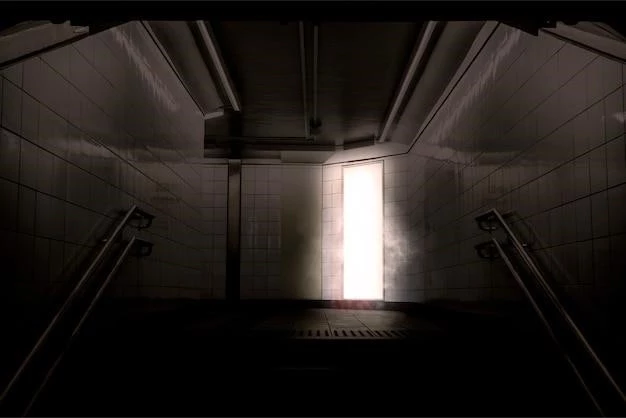Claustrophobia: Fear of Confined Spaces
Claustrophobia, derived from the Latin “claustrum” (a shut-in place) and the Greek “phobos” (fear), is a specific phobia characterized by an intense and irrational fear of confined spaces. This fear is disproportionate to the actual danger posed by the situation and leads to significant distress and avoidance behaviors.

Causes of Claustrophobia
While the exact causes of claustrophobia are not fully understood, several factors are believed to contribute to its development:
- Genetic Predisposition: Claustrophobia can run in families, suggesting a genetic component may be involved.
- Early Life Experiences: Traumatic experiences involving confinement, such as being trapped in a small space or experiencing a medical procedure involving confinement, can trigger claustrophobia.
- Learned Behavior: Observing a parent or caregiver exhibit fear of confined spaces can lead to learned claustrophobic responses in children.
- Brain Function: Abnormalities in the amygdala, the part of the brain responsible for processing fear and emotional responses, may play a role in developing phobias, including claustrophobia.
Symptoms of Claustrophobia
The symptoms of claustrophobia vary in intensity from person to person. Some individuals experience mild anxiety, while others have full-blown panic attacks. Common symptoms include:
- Physical Symptoms:
- Rapid heartbeat
- Shortness of breath or difficulty breathing
- Sweating
- Trembling or shaking
- Chest pain or tightness
- Nausea or dizziness
- Feeling faint or lightheaded
- Psychological Symptoms:
- Intense fear or anxiety
- Fear of losing control
- Thoughts of impending doom or death
- Urge to escape the situation
Diagnosis of Claustrophobia
Diagnosing claustrophobia involves a thorough assessment by a mental health professional. The doctor will consider the individual’s medical history, symptoms, and the extent to which the fear interferes with daily life. The Diagnostic and Statistical Manual of Mental Disorders (DSM-5) criteria for specific phobia, including claustrophobia, include:
- Marked fear or anxiety about a specific object or situation (in this case, enclosed spaces).
- The phobic object or situation almost always provokes immediate fear or anxiety.
- The phobic object or situation is actively avoided or endured with intense fear or anxiety.
- The fear or anxiety is out of proportion to the actual danger posed by the specific object or situation and to the sociocultural context.
- The fear, anxiety, or avoidance is persistent, typically lasting for six months or more.
- The fear, anxiety, or avoidance causes clinically significant distress or impairment in social, occupational, or other important areas of functioning.
- The disturbance is not better explained by the symptoms of another mental disorder.

Treatment Options for Claustrophobia
Fortunately, effective treatments are available to help individuals overcome claustrophobia. These include:
1. Cognitive Behavioral Therapy (CBT)
CBT is a highly effective treatment for claustrophobia. It involves identifying and changing negative thought patterns and behaviors associated with the fear of confined spaces. CBT typically includes:
- Cognitive Restructuring: Challenging and changing negative thoughts and beliefs about confined spaces.
- Exposure Therapy: Gradually exposing the individual to confined spaces in a safe and controlled environment to help them manage their anxiety.
- Relaxation Techniques: Teaching relaxation techniques, such as deep breathing and progressive muscle relaxation, to manage anxiety symptoms.
2. Medication
While not a primary treatment for claustrophobia, medication can be helpful in managing severe anxiety symptoms. Antidepressants, such as selective serotonin reuptake inhibitors (SSRIs) or serotonin-norepinephrine reuptake inhibitors (SNRIs), can reduce anxiety and panic attacks.
3. Support Groups
Joining a support group for people with claustrophobia can provide a safe and supportive environment to share experiences, learn coping strategies, and reduce feelings of isolation.
4. Virtual Reality Therapy (VRT)
VRT is an emerging treatment option for phobias, including claustrophobia. It involves using virtual reality technology to simulate exposure to feared situations in a controlled and safe environment. VRT allows for gradual exposure and can be tailored to the individual’s specific fears.
Tips for Managing Claustrophobia
While seeking professional treatment is essential for overcoming claustrophobia, several self-help strategies can help manage symptoms:
- Practice Relaxation Techniques: Regularly practice relaxation techniques like deep breathing, meditation, or yoga to reduce overall anxiety levels.
- Challenge Negative Thoughts: When you experience negative thoughts about confined spaces, challenge them with rational counter-arguments.
- Gradual Exposure: Gradually expose yourself to situations that trigger your claustrophobia, starting with less anxiety-provoking situations and gradually working your way up to more challenging ones.
- Educate Yourself: Learn as much as you can about claustrophobia, including its causes, symptoms, and treatment options. Knowledge can empower you to manage your condition effectively.
- Seek Support: Talk to trusted friends, family members, or a therapist about your claustrophobia. Sharing your experiences and feelings can provide emotional support and reduce feelings of isolation.
Conclusion
Claustrophobia is a treatable condition. With appropriate treatment and support, individuals with claustrophobia can overcome their fears, manage their anxiety, and live full and meaningful lives. If you or someone you know experiences claustrophobia, seeking professional help is crucial to begin the journey toward recovery.










